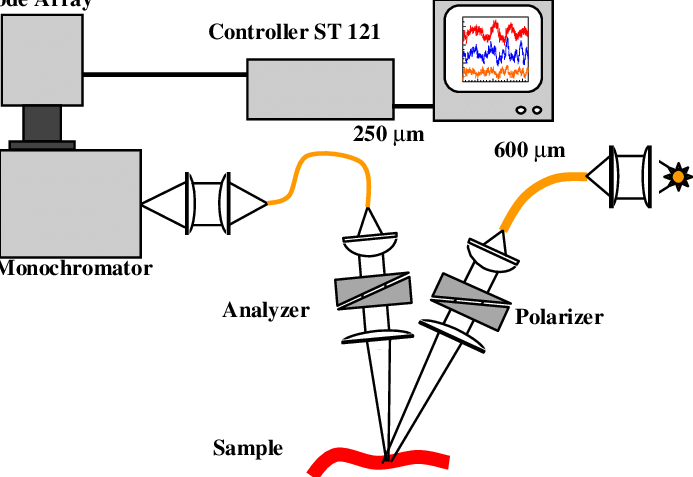Are you curious how scientists analyse solid materials like powders, rocks, and fabrics without separating them? If so, explore yourself with the diffuse reflectance spectroscopy (DRS) technique and how it allows the non-destructive analysis of solid samples. Diffuse reflectance spectroscopy measures how light interacts with a solid sample. Unlike traditional spectroscopy, where light passes through a liquid or gas, DRS focuses on the light reflected from a solid material’s surface. Light hitting a solid might be absorbed, reflected, or scattered in multiple directions. DRS precisely measures this diffusely scattered light that carries information about the chemical composition and properties of the sample.
Principle of DRS
Different chemical compounds absorb, reflect, and scatter light uniquely based on their molecular structure. When light interacts with a solid sample:
- Some wavelengths are absorbed, causing electronic transitions in the sample’s molecules.
- The remaining light is reflected or scattered, carrying details about the sample’s makeup.
By measuring the intensities of this reflected light at different wavelengths, DRS identify the chemical compounds present in the solid.
DRS instrument setup
A typical DRS instrument consists of several vital components.
- Light source: This is a broadband light source, such as a tungsten-halogen lamp or a xenon arc lamp, which emits light over a wide range of wavelengths.
- Monochromator: A monochromator selects specific wavelengths of light from the broadband source. It separates the light into its constituent wavelengths, allowing the measurement of the sample’s response at individual wavelengths.
- Sample holder: The solid sample is placed in a sample holder designed to minimise the effects of external light and ensure consistent sample positioning.
- Detector: The detector measures the intensity of the diffusely reflected light from the sample. Standard detectors used in DRS include photodiode arrays, charge-coupled devices (CCDs), or photomultiplier tubes (PMTs).
- Data acquisition and analysis system: A computer system processes the measured intensities of the reflected light at different wavelengths. Advanced software algorithms are used to analyse the spectral data and extract information about the sample’s chemical composition and physical properties.
Advantages of DRS
Like any analytical technique, diffuse reflectance spectroscopy has its advantages and limitations.
- Non-destructive: DRS allows for the analysis of solid samples without altering or destroying them, making them suitable for valuable or irreplaceable samples.
- Minimal sample preparation: Solid samples often require little to no preparation, reducing the time and effort needed for analysis.
- Rapid analysis: DRS measurements can be performed quickly, enabling real-time monitoring and quality control processes.
- Versatile: DRS can be applied to various solid materials, from powders and granules to bulk solids and surfaces.
With DRS, solid materials are characterised without damaging them. Analysing solid materials’ composition with diffuse reflectance spectroscopy is a powerful and non-destructive analytical technique. In the future, diffuse reflectance spectroscopy capabilities will be enhanced by integration with other analytical methods, enhancing solid material research. Next to an overview of diffuse reflectance spectroscopy, you can learn more about how DRS works and its diverse applications across multiple industries.

